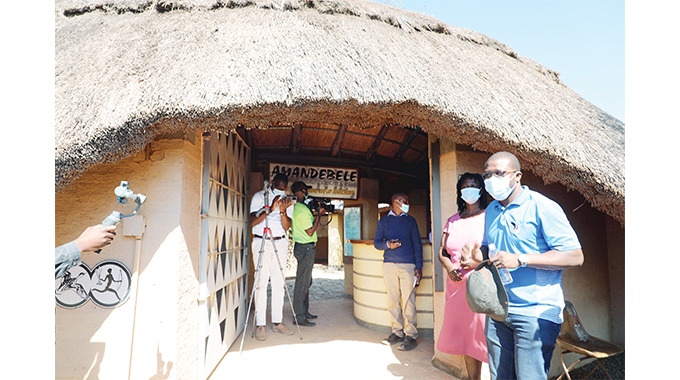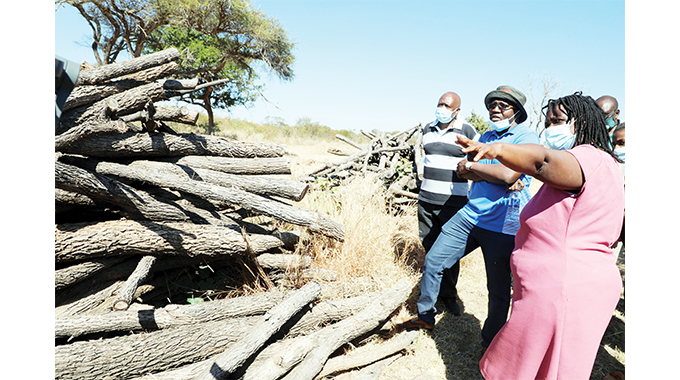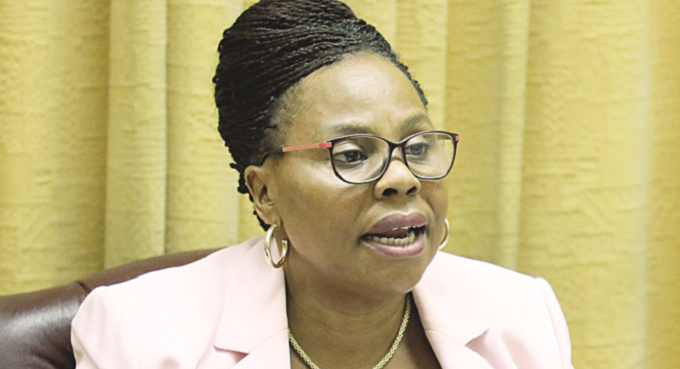WATCH: King Lobengula capital restoration on course

Mashudu Netsianda and Yvonne Ncube, Chronicle Reporters
WORK on the restoration of King Lobengula’s original capital, Old Bulawayo, which is part of the Heritage Corridor recently launched by President Mnangagwa is on course with the reconstruction of 10 beehive huts among other civil works set to begin on Monday.
Old Bulawayo was built by King Lobengula in 1870 and was burnt down in 1881 to counter invasion by white colonialists.
One of the king’s generals, Magwegwe Fuyana led the process of burning down the capital after which Lobengula and his people moved northwards to the present-day State House at Sauerstown in Bulawayo.
King Lobengula was the last king of the Ndebele and his monarchy collapsed in 1894 after it was raided by white settlers marking complete colonisation of present day Zimbabwe.
Old Bulawayo was gutted by a veld fire 11 years ago. It is envisaged that once complete, Old Bulawayo will boost the city’s tourism industry and economic value.
Already, Government has completed the upgrading of the 7km stretch from the Matopos Road leading to the site under the first phase of the programme, which is being spearheaded by the ministries of Home Affairs and Cultural Heritage, and Environment, Climate, Tourism and Hospitality Industry.
Environment, Climate, Tourism and Hospitality Industry Minister Mangaliso Ndlovu yesterday visited Old Bulawayo to assess progress on the ongoing works as Government steps up efforts to revive the cultural heritage site.

Ms Senzeni Khumalo (right) shows Minister Ndlovu (centre) the poles for erecting a palisade. (Pictures by Dennis Mudzamiri)
“The purpose of my visit is to access the progress in terms of reconstructing the home of King Mzilikazi. We have our set target to ensure that this iconic monument is restored not only because it has a great tourism potential, but also because it tells a big story about our heritage,” he said.
“We are working together with our parastatals which include the National Museum and Monuments of Zimbabwe, Zimparks, Forestry Commission and Environment Management Agency and the Zimbabwe Tourism Authority in this project.”
Minister Ndlovu said under the first phase of the programme, they have completed upgrading the access road leading to the site.
“Some work has taken place since my last visit and the road leading to Old Bulawayo has been graded and it is now trafficable. The borehole is now working and we have put up two water tanks,” he said.
“I would like to appreciate the team work and there were pledges that were made by some institutions mainly from my ministry and they have all delivered.”
Minister Ndlovu said some of the equipment for the reconstruction of huts will be delivered to the site on Monday.
“Starting next week, we will start receiving some materials from our suppliers and these include window and door frames and the doors and this will take us at least one week to finish the preliminary works. We want to build all the huts that were previously there so that a visitor to the place will have an idea of how a typical homestead of a Ndebele King looked like,” he said.
“It will then begin to tell the full story when linked with Inxwala and people will get to know how the people of this area lived like before colonisation.”
The minister said Old Bulawayo is an important cultural heritage site for tourism and education.
“We want to work closely with ZTA and museums to see if we can have packages that support schools to visit for educational purposes. It’s fundamental that we appreciate our history, heritage and our cultures, diverse as they are,” he said.
“We will be doing this right across the country because such places are of significant importance to our heritage and we want to make sure that these are promoted for tourism purposes as well as educational purposes.”
The restoration of King Lobengula’s capital was mooted in 1993 in the run-up to Bulawayo’s centenary celebrations and work was completed in 1997 with the help of royal experts from KwaZulu Natal Province in South Africa.
However, the palace was gutted by fire in August 2010 and has remained an eyesore as the Khumalos and National Museums and Monuments of Zimbabwe (NMMZ) disagreed over who should initiate the restoration process.
Also, King Mzilikazi’s grave, some 26km from Bulawayo along the Old Gwanda Road, has been lying derelict for some time.
NMMZ later erected a gate to the cave where the king was buried. That was in late 2004 after the organisation bowed down to pressure from cultural groups that protested that the grave was getting desecrated.
King Mzilikazi died on September 28 in 1868 and his remains were buried on a hill called Entumbane — a northern fringe of the Matopo Hills in November the same year after a series of ceremonies befitting his royal status.










Comments